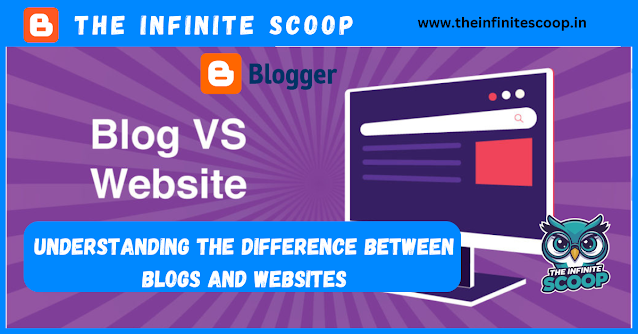Introduction
One of the most important tools available to individuals and
businesses alike is digital tools such as blogs and websites. Even though the
words are often used interchangeably, they are referring to slightly different
types of online platforms. An understanding of the differences between blogs
and websites may make a decision for your online presence even easier.
Definition
Blog: A website where the major content is placed on it in
chronological order, in the form of entries or posts. Most blogs are in an
informal or conversational tone. Blogs usually update newer information
regularly, and most blogs also allow comments by readers.
Website: A website is a generic term that encompasses
various types of business online. It can have a number of pages, for instance,
the home page, about page, contact page, and many more. Websites could be
static with rarely updated or dynamic and constantly updated. At times, it
might be an individual personal portfolio or an e-commerce-based website.
Content Structure
Such content constructs the blogs. The provided content has a specific periodicity and, in each entry, is presented in the order of the most recent additions. It is obvious that a form like this urges constant updates and participation of the reader.
A web site is more static in form. The most a typical web
site has is several pages with definite tasks, for example, providing
information about the company, products, or services.
Purpose and Goals
Blogs are meant to be up-to-date and engaging. They are mostly centered on opinions, insights, and even information regarding specific issues. Their aim is usually to attract a segmented audience and to promote page view multiplication as well as to encourage site visitors to interact as well as to develop community groups.
They are created to provide a wider spectrum of information
and other services. They can function as an online brochure, e-commerce site,
portfolio or corporate site. It is all about providing information and
achieving business goals-that is sales or leads.
Content Management
Blog sites are content-managed through systems that make it easy to create and update content. Some popular blog CMS platforms include WordPress, Blogger and Tumblr.
We also come to discover some use CMS platforms while others
are built from scratch. Well, blogs are forms of websites, but other types may
be demanding when handling and updating them along purpose and functionality.
Interactivity
Blogs are interactive. This is due to comments, likes, and shares. These then help build community and interaction.
Webs may include contact forms or even customer reviews, but
they are usually not as interactive as blogs.
Update Frequency
A blog is updated very frequently. The more often the blog is updated with new posts, the more likely the readers will come back to check and improve search engine rankings.
A website can be static with infrequent updates or dynamic
with regular content additions. This depends upon the purpose of the website
and the nature of the content.
SEO and Content Strategy
Blogs rely much on SEO strategies to attract organic traffic. Bloggers use keywords, backlinks, and high-quality content to enhance search rankings.
Websites mostly rely on SEO, but they have different strategies. An e-commerce website focuses on product descriptions, while a corporate site emphasizes service-related keywords.
Examples
Blog: Personal blog about travel experiences, posting once a week with new posts of destinations at different places.
Website: Business Website of a Travel Agency. The website
contains information about the services provided, online booking, and various
contact addresses.
Conclusion
That is to say, while blogs and websites are part of the same online landscape, they serve completely different purposes and fulfill different needs. Blogs do much better when it comes to presenting fresh, interesting content and community interaction. Websites, on the other hand, are more static and comprehensive platforms that allow for information, services, or products to be provided. Understood in the sense described, this gives users an easier way of making the right choice between the two and having the most suitable platform to suit their goals.


Post a Comment